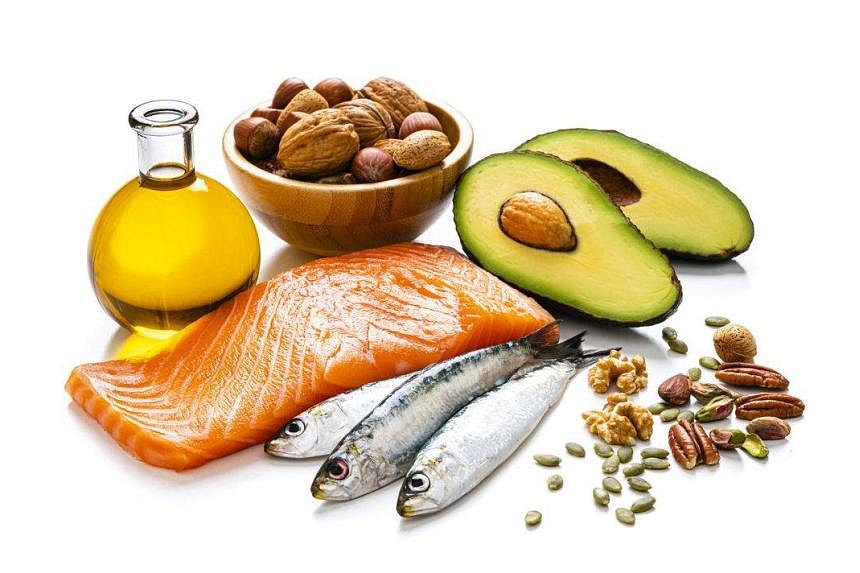10 ways to manage your cholesterol levels
High cholesterol is often referred to as a silent killer because it does not manifest through symptoms or physical appearance. But it can lead to a heart attack or stroke.
The prevalence of high cholesterol in Singapore’s population increased from 25.2 per cent in 2010 to 39.1 per cent in 2020, according to the National Population Health Survey 2020.
Close to four in 10 people here aged 18 to 74 years had the chronic condition in 2019 and 2020.
In 2019, high cholesterol was the second most common risk factor for heart attacks in Singapore, after high blood pressure.
A high cholesterol level is a major risk factor for heart disease and plays a significant role in the development of atherosclerotic disease. The disease refers to the build-up of fats, cholesterol and other substances in and on the artery walls, which can restrict blood flow and lead to a heart attack or stroke.
Various factors can contribute to a high cholesterol level.
Ms Natalie Yeo, a dietitian at Singapore Heart Foundation (SHF), says: “Some may have inherited high blood cholesterol, a condition passed down genetically. Others may acquire it through lifestyle factors such as diet, being overweight, physical inactivity, smoking and excessive alcohol consumption.”
The good news is that it is possible to moderate one’s cholesterol levels.
Professor Tan Huay Cheem, chairman of SHF and senior consultant at the National University Heart Centre, says cholesterol levels can be lowered by 10 to 20 per cent after three to six months of changes in diet and exercise.
Here are 10 ways to improve your cholesterol levels.
1. Axe the bad fats
Mr Derrick Ong, accredited dietitian and founder of Eat Right Nutrition Consultancy & Clinic, explains that the liver produces good cholesterol (high-density lipoprotein) or bad cholesterol (low-density lipoprotein) in response to the type of fat people consume in their diet.
A diet rich in saturated and trans fats raises one’s bad cholesterol level and increases the risk of heart disease and stroke.
To reduce the consumption of bad fats, Ms Yeo recommends choosing lean protein sources such as chicken breast, as well as fish, egg, tofu, beans, lentils and legumes.
Also opt for reduced or low-fat dairy products such as low-fat milk, yogurt and cheese.
Mr Ong advises minimising the intake of baked products such as cakes, cookies, biscuits and buns as they tend to be high in saturated and trans fats.
2. Consume good fats in moderation

A diet higher in good fats such as monounsaturated and polyunsaturated fats helps increase one’s good cholesterol level.
Consume at least two servings of oily fish a week to reap the goodness of Omega-3 fatty acids, says Ms Yeo. This includes salmon, tuna and mackerel.
In addition, replace butter and margarine with fresh avocado, 100 per cent unsalted nut butter or a small dip of extra virgin olive oil.
She also advises swopping unhealthy snacks with air-popped popcorn, roasted or steamed chickpeas, wholemeal crackers, unsalted baked or roasted nuts and seeds, and consuming them in moderation.
3. Avoid high-cholesterol foods such as organ meat
Limiting the amount of cholesterol-rich food you eat is important, as many foods high in cholesterol tend to contain more saturated fats.
Those with a family history of high cholesterol should be wary of their cholesterol intake, warns Mr Ong.
Ms Yeo notes: “Those with diabetes, high blood cholesterol or are at risk of heart failure should also be cautious as they may be more sensitive to changes in blood cholesterol levels.”
Foods high in cholesterol include organ meat such as liver, kidney and innards; seafood such as oyster; egg yolks and whole milk dairy products such as cream, butter and cheese.
Says Ms Yeo: “It is advisable to consult a doctor who will be able to advise on your cholesterol intake based on your health condition.”
4. Get friendly with fibre
Fibre, specifically soluble fibre, binds to cholesterol in the intestine and transports it out of the body, helping to lower bad cholesterol levels, explains Ms Yeo.
Foods rich in fibre include wholegrains, fruit, vegetables, legumes and nuts. Some example of foods rich in soluble fibre are avocado, sweet potato, broccoli and flax seeds.
The recommended daily intake of fibre for adults includes at least two to three servings of wholegrains such as oats, brown rice, millet or quinoa. Adults are also encouraged to eat two servings of fruit and vegetables each a day.
5. Shop smart

Look out for products with the healthier choice symbol, and the SHF logo as they are assessed by SHF’s dietitian and review panel to be beneficial for heart health.
Dietitians also suggest comparing the fat content between two products using the per 100g column. Choose the one with a lower fat content.
They also advise inspecting the ingredient list.
“Ingredients are listed in descending order by weight. The first ingredient listed is the highest amount, followed by the second, third and so on,” says Ms Yeo.
Avoid products with high amounts of fats noted as these ingredients: vegetable oil, partially hydrogenated vegetable oil, butter, margarine, shortening, dripping, lard, tallow, cream, sour cream or coconut oil and milk.
6. Cook up a storm using different methods
Choose healthier cooking methods instead of deep frying to reduce the use of oil, say experts.
To do so, prepare more homecooked meals and experiment with grilling, steaming, pan-frying and baking. Also, cook with healthier oils such as canola, sunflower, olive and corn oil, says Ms Yeo.
Mr Ong warns that palm oil, in particular, is unhealthy.
“It is high in saturated fat and is commonly used to cook food bought outside because it is cheaper. A lot of oil is absorbed in the batter during deep-frying, hence it is unhealthy for one’s cholesterol levels,” he says.
7. Get moving

Regular exercise may increase good cholesterol levels and help to lower bad cholesterol and triglycerides, a type of fat found in the blood, highlights Ms Yeo.
Experts recommend aiming for 150 to 300 minutes of moderate-intensity aerobic physical activity each week.
Ms Yeo suggests incorporating muscle- and bone-strengthening activities such as weight training, pilates and body weight callisthenics at least two times a week.
“Choose physical activities you enjoy so that the exercise sessions will not feel like a chore,” she says.
8. Go easy on alcohol
Alcohol is high in calories and sugar, and has a potent effect on triglycerides.
Ms Yeo says: “Our bodies convert excess calories that we do not require into triglycerides to be stored in our fat cells. When triglyceride levels are high, it can increase one’s risk of cardiovascular disease.”
If you drink, do so in moderation. According to Ms Yeo, women should have no more than one standard drink a day, while men should cap it at two drinks a day. A standard drink refers to 220ml of beer, or 100ml of wine, or 30ml of spirit.
9. Quit smoking
Vapour released from cigarette smoke has been shown to increase bad cholesterol levels and lower good cholesterol levels.
Citing a study published in 2013 in a peer-reviewed journal titled Biomarker Research, Ms Yeo says: “Quitting smoking is clearly associated with an increase in good cholesterol concentration and, generally, the increase occurs rapidly in less than three weeks.”
10. Take your medication
If you are diagnosed with high blood cholesterol, your doctor may prescribe medications to lower your cholesterol levels.
For example, statin, an oral medication, works in the liver to prevent cholesterol from forming and reduces the amount of cholesterol circulating in the blood.
However, says Ms Yeo: “It is vital to note that lifestyle changes should not be viewed as an alternative therapy to medicine and, likewise, you cannot rely on medication alone to manage high cholesterol effectively without making lifestyle changes.”
Get The New Paper on your phone with the free TNP app. Download from the Apple App Store or Google Play Store now


